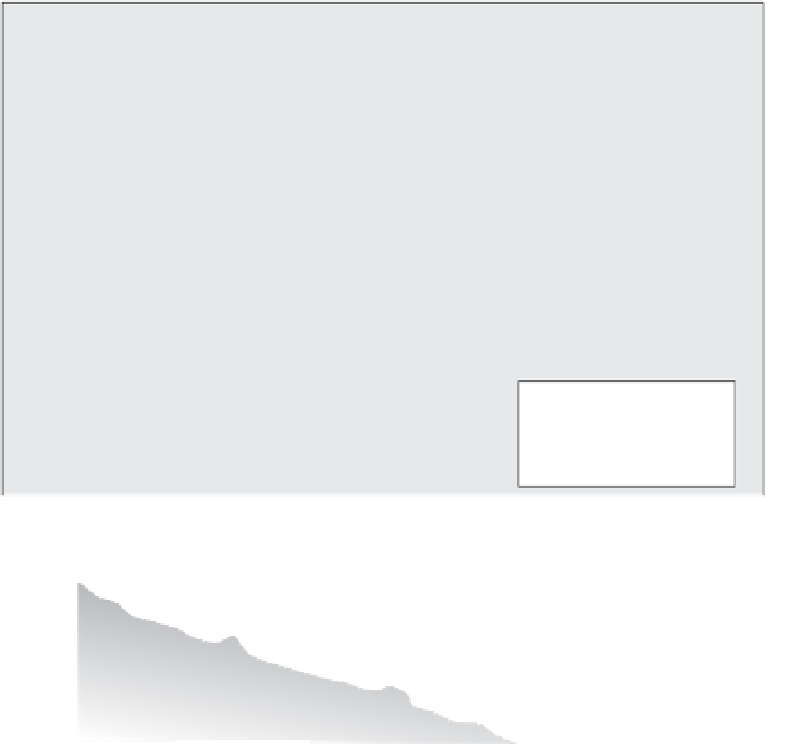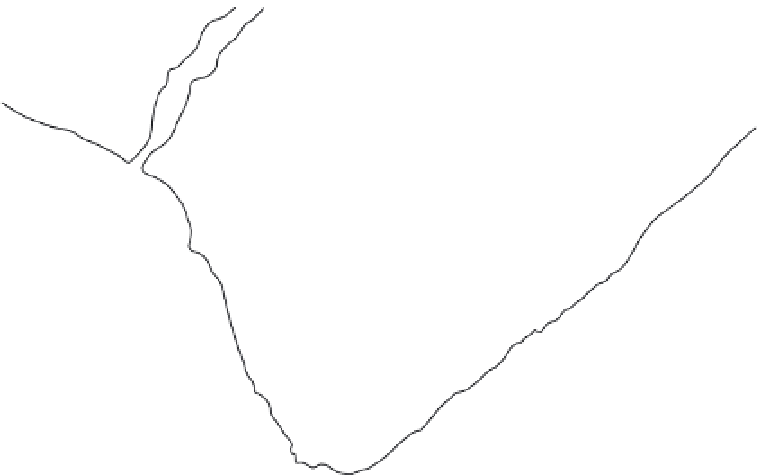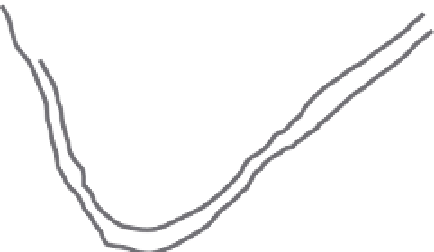Geology Reference
In-Depth Information
Beach Ridges
b
Turakirae Head
b'
Pacific
Ocean
a
beach ridges
0
1
A
a'
kilometer
b
Ridge
Profiles
30
BR5
a
BR4
20
BR3
modern
beach ridge
(BR1)
10
BR2
200
2.3 m
0
sea
level
meters
a'
b'
B
Distance
Fig. 2.6
Modern and uplifted beach ridges on a deforming coast.
A. Map of beach ridges at Turakirae Head, southern tip of the North Island of New Zealand. The Wairarapa Fault is
situated a few kilometers to the east of the beach and has caused coseismic uplift of the ridges. B. Cross-sections of
topography of beach ridges showing modern storm beach and successive coseismically uplifted ridges. The crests of
correlative ridges rise progressively higher above sea level toward the northeast (from “a” to “b”), indicating increasing
coseismic displacements to the northeast in each event. Modified after Stevens (1974) and McSaveney
et al.
(2006).
provide a horizontal reference surface (Fig. 2.6
and Plate 1B). If the height of the present storm
ridge above sea level is known, then uplifted
and deformed older ridges can be used to define
deformation (e.g., Marshall and Anderson, 1995;
McSaveney
et al.
, 2006).
Although not geomorphological in nature,
zonations of marine plants or animals can
sometimes provide useful biological markers
for defining deformation. For example, those
creatures that are attached to rocks and grow
just below the high-tide line can be used to
define the local sea surface just as easily as can
abrasion platforms. If this coastal community
were uplifted coseismically, the upper eleva-
tional limit of these organisms would record
the vertical displacement at that spot on the
coast (Plafker and Ward, 1992). Although such
a record can be quite precise, it is clearly more
transient than most geomorphic markers:
attached organisms exposed continuously to
the air soon die and eventually fall off the
rocks to which they were attached, implying
that the record of such instantaneous uplift
events must be obtained within a few months
to years of the event (Carver
et al.
, 1994).








































































